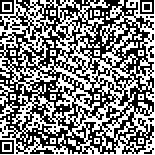| 摘要: |
| [摘要] 目的 探讨心肺联合超声目标导向液体管理在重症加强护理病房(ICU)心脏术后患者中的临床应用效果。方法 选择2020年6月至2021年3月柳州市工人医院ICU收治的心脏术后患者50例,采用随机数字表法将其分为研究组和对照组,每组25例。研究组采用心肺联合超声目标导向液体管理方案指导输液,对照组根据中心静脉压指导输液。比较两组术后24 h的心率、呼吸频率、平均动脉压(MAP)、氧合指数(PaO2/FiO2)、血乳酸、左室射血分数水平,以及术后24 h内患者肾上腺素用量、多巴胺用量、总输液量、输血量等临床指标。比较两组二次手术率和28 d病死率。结果 在术后24 h,研究组呼吸频率、心率低于对照组,MAP、PaO2/FiO2水平高于对照组,差异有统计学意义(P<0.05)。在术后24 h内,研究组肾上腺素用量、多巴胺用量、总输液量和输血量均低于对照组,差异有统计学意义(P<0.05)。研究组术后24 h呼吸机使用时间、住ICU时间、住院时间均短于对照组,差异有统计学意义(P<0.05)。研究组需二次手术1例,对照组2例,两组二次手术率差异无统计学意义(χ2=0.000,P=1.000)。对照组术后28 d死亡1例,研究组0例,两组术后28 d病死率差异无统计学意义(χ2=0.000,P=1.000)。结论 心肺联合超声目标导向液体管理在ICU心脏术后患者中应用效果良好,值得临床推荐。 |
| 关键词: 超声检查 心脏外科 重症监护病房 液体管理 |
| DOI:10.3969/j.issn.1674-3806.2022.01.12 |
| 分类号:R 459.9 |
| 基金项目:广西卫生健康委科研课题(编号:Z20200246) |
|
| A study of the clinical application of cardiopulmonary combined with ultrasound target-directed fluid management in ICU patients after cardiac surgery |
|
LI Xia, LAI Jun-hua, MA Hua-yi
|
|
Department of Critical Care Medicine, Liuzhou Worker′s Hospital, Guangxi 545005, China
|
| Abstract: |
| [Abstract] Objective To explore the clinical application effect of cardiopulmonary combined with ultrasound target-directed fluid management on the intensive care unit(ICU) patients after cardiac surgery. Methods Fifty patients undergoing cardiac surgery who were admitted to the ICU of Liuzhou Worker′s Hospital from June 2020 to March 2021 were selected and divided into a study group and a control group by random number table method, with 25 cases in each group. Cardiopulmonary combined with ultrasound target-directed fluid management was used to guide infusion for the patients in the study group, while central venous pressure was used to guide infusion for the patients in the control group. The levels of heart rate, respiration rate, mean arterial pressure(MAP), oxygenation index(PaO2/FiO2), blood lactic acid, and left ventricular ejection fraction were compared between the two groups 24 hours after surgery, as well as other clinical indicators such as the dosage of adrenaline and dopamine, total infusion volume and blood transfusion volume in patients within 24 hours after surgery. The second operation rate and 28-day mortality rate were compared between the two groups. Results The respiratory rate and the heart rate in the study group were lower than those in the control group 24 hours after surgery, and the levels of MAP and PaO2/FiO2 in the study group were higher than those in the control group, and the differences were statistically significant(P<0.05). Within 24 hours after surgery, the dosage of adrenaline and dopamine, total infusion volume and blood transfusion volume in the study group were lower than those in the control group, and the differences were statistically significant(P<0.05). The use time of ventilator, ICU stay and hospitalization time in the study group was shorter than that in the control group 24 hours after surgery, and the difference was statistically significant(P<0.05). One case in the study group needed a second operation, and 2 cases in the control group needed a second operation, and there was no significant difference in the second operation rate between the two groups(χ2=0.000, P=1.000). One case died in the control group 28 days after operation and 0 cases died in the study group, and there was no significant difference in the postoperative 28-day mortality rate between the two groups(χ2=0.000, P =1.000). Conclusion Cardiopulmonary combined with ultrasound target-directed fluid management has a good application effect on ICU patients after cardiac surgery, and it is worthy of clinical recommendation. |
| Key words: Ultrasonography Cardiac surgery Intensive care unit(ICU) Fluid management |

